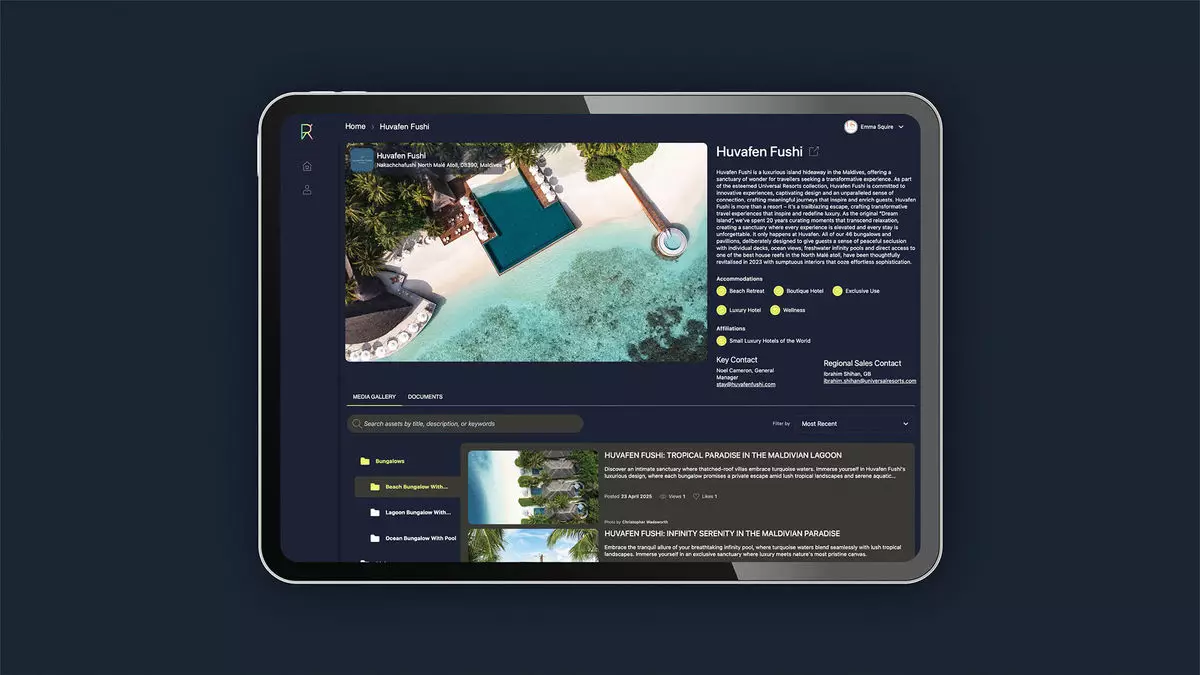The world of luxury travel is characterized by its relentless pursuit of perfection, intricate detailing, and exclusive experiences. Yet, behind the scenes, industry professionals often grapple with a common obstacle: access to high-quality, comprehensive content that accurately represents the destinations and accommodations they design for their elite clientele. Katie Terrington’s six-hour investment in building a visual itinerary exemplifies this challenge—a painstaking search for suitable images and an intense effort to understand property layouts when traditional channels fall short. Such laborious processes are more than mere inconveniences; they are significant barriers that hinder the creation of seamless, tailored travel experiences.
This predicament isn’t just about aesthetic presentation; it’s about delivering emotional resonance. For ultra-wealthy clients, the difference between a good trip and an unforgettable one hinges on meticulous detail. When agents and planners lack immediate access to compelling visuals, they risk diluting the allure of their proposals or, worse, losing the client’s trust. The work of sourcing and verifying rich content is fundamentally critical in nurturing confidence, fostering excitement, and ultimately closing the sale.
The Broken Content Supply Chain and Its Impact on the Luxury Industry
The woes articulated by Katie Terrington and Emma Squire highlight a systemic deficiency within the luxury travel ecosystem. Squire’s experience of chasing media assets—repeatedly emailing hotels and managing disorganized files—mirrors a broader industry inefficiency. Hotel chains and service providers often operate with fragmented content repositories, making it a cumbersome task for advisors to find, organize, and utilize media assets effectively. This disjointed system leads to delays, mismatched expectations, and ultimately compromises the client’s perception of the exclusiveness and quality of the offerings.
Moreover, the problem extends beyond mere inconvenience. Hotel and destination marketers are in a race to distinguish themselves in a crowded luxury landscape. Their inability to present updated, professional visuals to travel agents diminishes their competitiveness. With content scattered across emails, Dropbox links, and social media, their messages risk becoming diluted, inconsistent, and obsolete—a recipe for lost opportunities.
Introducing Pixi: A Game-Changer in Content Management
Addressing these pain points head-on, Emma Squire and Alan Ball developed Pixi—a sophisticated digital hub designed to streamline and elevate content sharing between travel suppliers and advisors. Unlike traditional methods, Pixi offers a centralized platform where hotels, resorts, airlines, and other luxury service providers can upload, organize, and instantly share high-quality media assets. Powered by artificial intelligence, the platform automates categorization, tagging, and metadata creation, reducing manual effort and minimizing errors.
The significance of this innovation cannot be understated. By providing a platform that makes content instantly accessible and well-organized, Pixi drastically reduces the time advisors spend on sourcing and verifying information. As a result, they can dedicate more time to curating personalized experiences, building relationships, and closing deals—all while ensuring their clients receive a visually compelling and accurate representation of their upcoming journey.
Furthermore, Pixi acts as more than just a content repository. It functions as a marketing and analytics tool, allowing suppliers to monitor engagement metrics and discover which travel professionals are accessing and interacting with their media. This data-driven approach offers a strategic advantage—hotels can identify motivated partners and tailor their outreach accordingly, transforming content into a powerful lead-generation asset.
Transforming Industry Dynamics: A New Standard in Content Sharing
What makes Pixi particularly compelling is its vision of becoming a universal standard within the luxury travel sector. Emma Squire hopes that one day, being “on Pixi” will be as commonplace as having a social media presence—an industry norm for seamless content exchange. The platform’s tiered subscription model, starting at approximately $270 per month, makes it accessible to a broad range of suppliers while providing scalable features suited to larger properties.
For travel advisors, Pixi offers an invaluable advantage: no cost or obligation to join, provided they go through a simple credential verification. The platform fosters a community of “insiders,” nurturing a network of trusted professionals who can share and utilize content efficiently. Katie Terrington, a proud Pixi Insider, attests to the platform’s effectiveness—being able to share images, videos, and 3D walkthroughs in real time not only enhances the client experience but also elevates the advisor’s reputation for professionalism and attention to detail.
In the broader context of an increasingly digital and personalized luxury travel environment, platforms like Pixi are charting a new course—one where access to instant, curated, and high-quality content becomes an industry standard rather than a luxury perk. This shift promises to redefine how travel is marketed, sold, and experienced, ultimately elevating the level of service that discerning clients expect.
Disrupting Traditional Content Paradigms and Elevating Client Expectations
The advent of centralized content hubs marks a pivotal transformation in luxury travel. While social media remains a tool for marketing, the strictly curated, exclusive content shared through platforms like Pixi respects client privacy and enhances bespoke service. Advisors no longer need to rely on social links or casual snippets from social feeds; they have a dedicated, professional space tailored to their needs.
This evolution is also about empowering travel professionals. With instant access to current inventory visuals and detailed property insights, they can craft narratives that evoke emotion, tell stories that resonate, and build trust with clients before the journey even begins. For clients, this means receiving more personalized, visually rich proposals that reflect their desires with greater precision, ultimately leading to higher satisfaction and more loyalty.
In a sense, Pixi represents a broader industry awakening—a recognition that content management is not merely a backend task but a strategic pillar of luxury service. By investing in such digital infrastructure, luxury travel providers and agents position themselves as innovative leaders, committed to elevating every facet of the client experience.
Note: This new era of content centralization is about more than convenience; it’s about setting a new benchmark for excellence, transparency, and personalization in luxury travel.


Leave a Reply